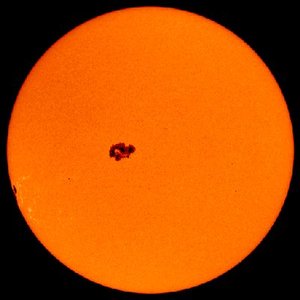8 July
1998: On 8 July 1998, astronomers discovered a nearby star system that could be just like our own Solar System. An international team later announced the discovery of a ring of dust particles around the star, Epsilon Eridani, appeared to signify a Solar System very similar to our own, but younger.
Epsilon Eridani is about 10 light-years from Earth - close by astronomical standards. It is a young star, still circled by a disk of dust left over from the star’s birth. A similar disk circled our own Sun in the early years and was the material from which our Solar System formed. Thus, Epsilon Eridani may be a window to our own past, a view of our Solar System shortly after the planets formed. Coincidentally, Epsilon Eridani has long been an object of great interest, even being monitored for radio signals that might signal intelligent life.
Before the 1998 finding, another, larger planet had already been found orbiting Epsilon Eridani. The object, with approximately the mass of Jupiter, orbits the star every five years.
Researchers believe that life would struggle to evolve to an intelligent level in such a young system, where comets and asteroid would routinely hit a planet.










